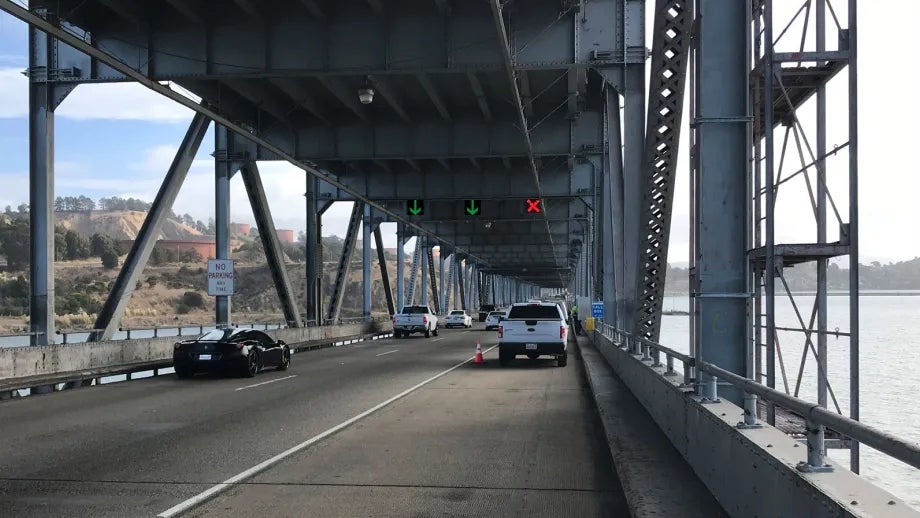Richmond-San Rafael Bridge Travel Alert: Ignore Arrows, Xs on Overhead Signs
Motorists traveling eastbound on Interstate 580 between Marin and Contra Costa counties are advised for the next several weeks to disregard the green arrows and red Xs that periodically will be displayed on the overhead message signs on the lower deck of the Richmond-San Rafael Bridge.
The Metropolitan Transportation Commission’s Bay Area Toll Authority (BATA) affiliate and Caltrans tomorrow will begin a second phase of sign testing to prepare for the scheduled April 2018 opening of a third eastbound traffic lane between San Rafael and Richmond. During this newest testing phase, the 20 banks of electronic message signs above the lower deck lanes will display the green arrows and red Xs in various configurations. But only the two left lanes will be open to traffic.
BATA and Caltrans are working in partnership with the Transportation Authority of Marin (TAM) and the Contra Costa Transportation Authority (CCTA) to convert the existing shoulder on eastbound I-580 to a peak-period use lane from the Sir Francis Drake Boulevard on-ramp in San Rafael to a newly expanded Richmond Parkway/Point Richmond exit in Richmond. The new third lane will be open to traffic during heavily-congested hours, typically each day from 2 p.m. to 7 p.m.
A new video and other information about the I-580 Richmond-San Rafael Bridge Access Improvement Projects can be found on the MTC Web site at mtc.ca.gov/our-work/plans-projects/major-regional-projects/richmond-san-rafael-bridge-access-improvements.
MTC is the transportation planning, financing and coordinating agency for the nine-county San Francisco Bay Area. BATA, which administers revenue from the region’s seven state-owned toll bridges, is funding the Richmond-San Rafael Bridge Access Improvement Projects with support from Caltrans to integrate these improvements into the state’s traffic management system.

